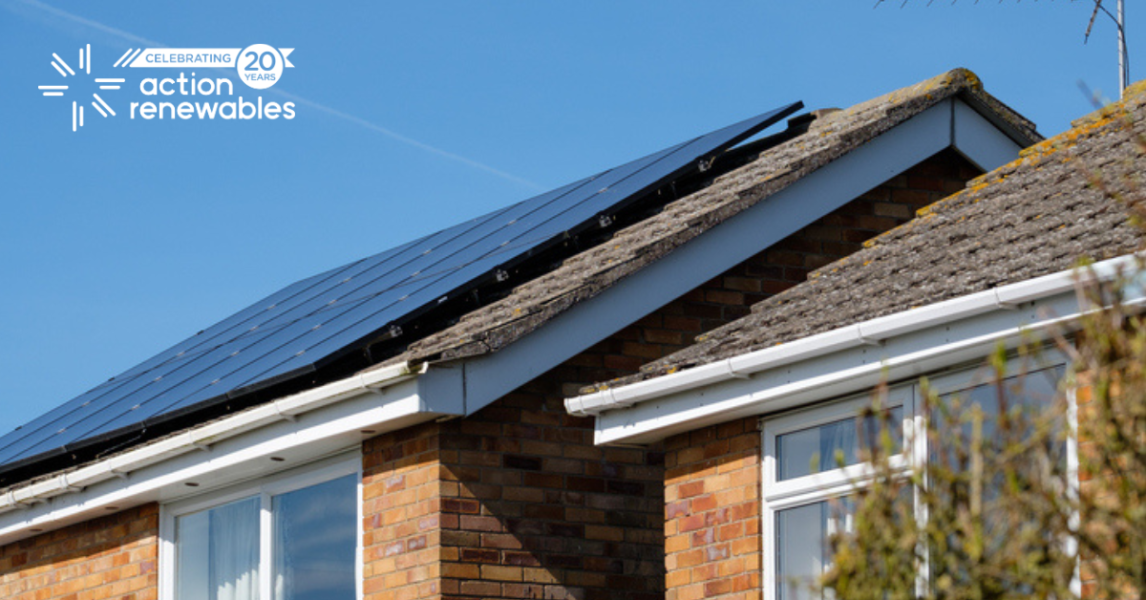
Shining a light on Solar PV: Navigating the bright side of local planning regulations.
18/09/2023
In Northern Ireland there has been an increase in the popularity of solar photovoltaic (PV) installations in recent years. This can be largely attributed to the increase in awareness of climate consciousness and a deeper understanding of the benefits associated with solar power, particularly in domestic and commercial settings. So much so, in Northern Ireland, there are 46,632 generating stations as of the year 2021[1]. However, due to solar installations being regulated by town planning, just like all kinds of significant development, there are several aspects to solar development that can be complex and difficult to understand, particularly when it comes to what is right and wrong regarding installations. This blog will hopefully help you make an informed decision on whether solar is available to you.
What do I need for solar PV?
Generally, a southeast to southwest facing, unshaded roof slope with a pitch angle of 30-35o is ideal for solar PV. East or West facing roofs can also be considered, however, they will be less efficient. The chosen location for solar panels will also need to be structurally sound. Suitable roof types include traditional tiled domestic roofing and aluminium cladding commonly used on large commercial units or factories. It is important in this case, and in all scenarios, that a reputable installer confirms that the structure is sound and applies the correct mounting or racking system best suited to the location.
Permitted Development
Planning permission for solar development is generally not required for a domestic dwelling or commercial property as long as the installed capacity of the PV system is below 50kW in size. An installation of 50kW or below is classed as ‘permitted development’ and therefore does not require planning permission. Permitted development is outlined to permit certain forms of development within reason, that do not require planning permission. Both solar PV and solar thermal are included under permitted development regulations and have been since a government extension of development rights in 2008 to include certain types of renewable development in a bid to increase uptake.
Permitted development for Solar PV in Northern Ireland is classed into domestic and non-domestic categories. Class A (roof mounted) is the most common form of permitted development for both domestic and non-domestic solar installations.
- On a domestic dwelling, class A allows for the installation, alteration or replacement of solar PV or solar thermal equipment on the roof of a dwelling-house or any building within the curtilage of a dwelling house[2].
- For a non-domestic dwelling, class A allows for the installation, alteration or replacement of solar PV or solar thermal equipment on a building other than a dwelling-house or block of flats[3].
When do I need Planning Permission?
Whilst in most cases, small scale solar PV installations (50kW or below) fall under permitted development, there are exceptions where permitted development is not acceptable. For solar development taking place on the roof of a property, planning permission will be required if, any part of the installed equipment would protrude more than 0.2m beyond the plane of an existing roof slope which faces onto a visible road. Planning permission would also be required if any part of the installed equipment would exceed the highest part of the existing roof ridge, or the installed panels would exceed 1.5m above the plane of any flat roof for a domestic dwelling or 2m for a non-domestic dwelling. A solar installation on a non-domestic flat roof must also have a minimum 2m boundary from the start of the array and the roof edge.
An important factor to consider is the age and location of the building. This is important as a planning application / listed building consent will be required if your building is defined as ‘listed’. Buildings can be listed due to their architectural or historical importance to the local area and are graded in importance from A, B+, B, B1 and B2. Details of all listed buildings area located on the Department of Communities website[4]. A planning application would also be required for PV development if the site is located in a World Heritage Site, Area of Outstanding Natural Beauty[5] or a Local Conservation Area[6].
A common misconception is that if a planning application is required, renewable installations cannot take place. This is not the case, and often permission can be granted. However, certain constraints may be applicable depending on the nature of the building.
How long does planning permission take?
In Northern Ireland planning decisions are undertaken by each local council and will vary depending on the council area that the application falls within. In general, planning applications for renewable development in Northern Ireland has increased in the years 21/22 – 22/23 from 82 to 121. The average processing time for a renewable application is 51.4 weeks as per the 22/23 period. Encouragingly, the application approval rating within this period was 91.5%. For Solar PV in the period 22/23, the Northern Ireland average processing time is 20.2 weeks based on 17 applications for PV development and 12 decided upon with an approval percentage of 91.7%[7].
If I think I need planning permission, what can I do?
If after reading the above information you believe that your site may need a planning application or you wish to install more than 50kW of solar PV, it is recommended that you seek advice from a local planning consultant or a reputable installer. As mentioned, planning in Northern Ireland is divided into each council district, meaning that if you require an application it will need to be submitted to the council in which the location of the development is situated. A list of local planning offices can be found at Planning offices in NI | nidirect.
[1] Northern Ireland: number of renewable energy sites 2021 | Statista
[2] The Planning (General Permitted Development) Order (Northern Ireland) 2015 (legislation.gov.uk)
[3] The Planning (General Permitted Development) Order (Northern Ireland) 2015 (legislation.gov.uk)
[4] Buildings Database | Department for Communities (communities-ni.gov.uk)
[5] Areas of Outstanding Natural Beauty | Department of Agriculture, Environment and Rural Affairs (daera-ni.gov.uk)
[6] Conservation Area Guides (A-Z list) | Department for Infrastructure (infrastructure-ni.gov.uk)
[7] Northern Ireland planning statistics April 2022 – March 2023 | Department for Infrastructure (infrastructure-ni.gov.uk)
Author: David Maze

